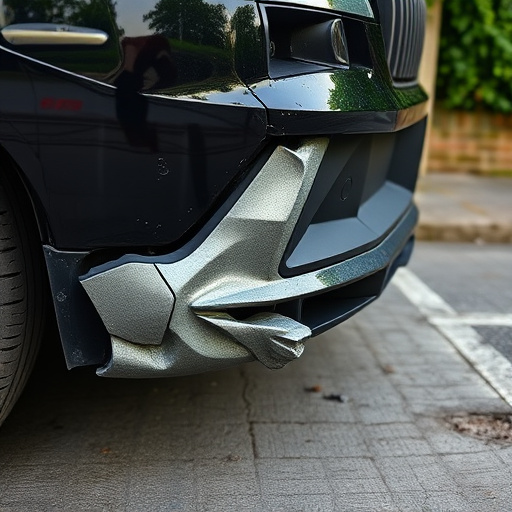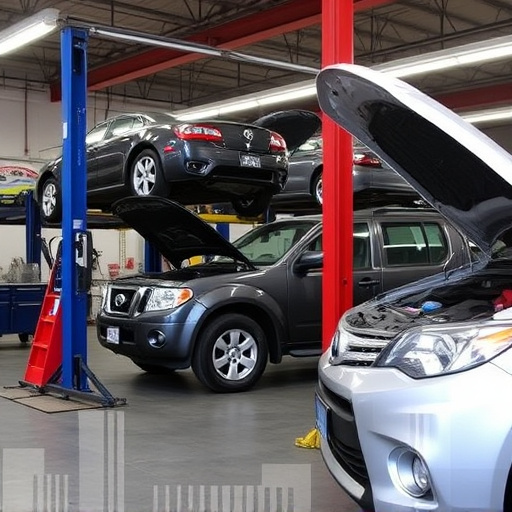The insurance claim management process has undergone a remarkable digital transformation, replacing traditional paper-based systems with automated and online platforms. This evolution enhances efficiency, customer experiences, and speed in handling claims, as seen in innovations like paintless dent repair. While automation streamlines straightforward claims, complex scenarios still require human expertise for specialized knowledge and nuanced assessments. KPIs, such as average settlement time and denied claims rates, measure success, with cost optimization through processes like collision repair coordination proving beneficial without compromising service quality or customer satisfaction.
In today’s digital era, the question arises: is traditional insurance claim management still a worthwhile investment of time and resources? The evolving landscape demands innovative approaches. While automation streamlines processes, human intervention remains vital for complex cases. This article explores the balance between efficient automation and the empathy-driven human touch in claims handling. We delve into key performance indicators to measure success, providing insights into effective insurance claim management strategies that adapt to a changing world.
- The Evolving Landscape of Insurance Claim Management
- Efficient Automation vs. Human Touch in Claims Handling
- Measuring Success: Key Performance Indicators for Effective Insurance Claim Management
The Evolving Landscape of Insurance Claim Management

The landscape of insurance claim management has undergone a significant transformation in recent years, driven largely by technological advancements and changing consumer expectations. Traditional methods, once dominated by paper-based processes and manual tracking, have made way for digital platforms and automated systems. This shift has not only improved efficiency but also enhanced the overall customer experience, making it smoother and faster.
With the rise of online claim submission, real-time updates, and remote assessments, insurance companies are now equipped to handle claims more effectively. For instance, services like paintless dent repair offered by vehicle body shops have revolutionized car dent repair, eliminating the need for extensive repainting and reducing repair times. This not only saves time and money but also ensures that policyholders get their vehicles back faster, promoting customer satisfaction.
Efficient Automation vs. Human Touch in Claims Handling

In today’s digital era, insurance claim management has witnessed a significant evolution, where efficient automation and cutting-edge technology are reshaping traditional processes. While some may argue that this shift reduces the need for human involvement, especially in straightforward claims, the value of a human touch remains undeniable. Automated systems excel at handling repetitive tasks, such as data entry and initial assessments, ensuring speed and accuracy. This allows insurance providers to process basic claims swiftly, delivering immediate relief to policyholders.
However, when it comes to more complex scenarios, particularly involving car repair services, car paint services, or car dent repair, a human adapter’s expertise becomes crucial. These cases often require specialized knowledge, careful assessment of damages, and consideration of various factors that may not be readily apparent through automation. The human touch ensures empathy, personalized service, and the ability to navigate intricate details, ultimately enhancing customer satisfaction and fostering trust in the claims process.
Measuring Success: Key Performance Indicators for Effective Insurance Claim Management

In the dynamic landscape of insurance, measuring success in claim management goes beyond simple numbers. Key Performance Indicators (KPIs) play a pivotal role in gauging the effectiveness and efficiency of this process. For instance, tracking the average settlement time can highlight improvements in streamlining claims, ensuring policyholders receive timely compensation. Similarly, monitoring the rate of denied or delayed claims offers valuable insights into the quality of documentation, communication, and overall customer service.
A crucial KPI for any insurance provider is the cost of claim management as a percentage of total claims. Optimizing this metric through efficient processes, including effective collision repair coordination, can lead to significant savings without compromising on customer satisfaction. For instance, seamless integration with automotive collision repair networks facilitates faster, more accurate assessments, reducing the likelihood of disputes and ensuring policyholders receive high-quality repairs promptly.
In an era where automation is transforming industries, the question arises: is traditional insurance claim management still relevant? The answer lies in finding a harmonious balance. While efficient processes and technology streamline claims handling, a human touch remains indispensable for complex cases. By measuring success through key performance indicators, insurers can optimize their practices, ensuring a satisfying customer experience. Insurance claim management continues to evolve, offering both automated efficiency and personalized support, catering to diverse client needs in today’s dynamic market.














